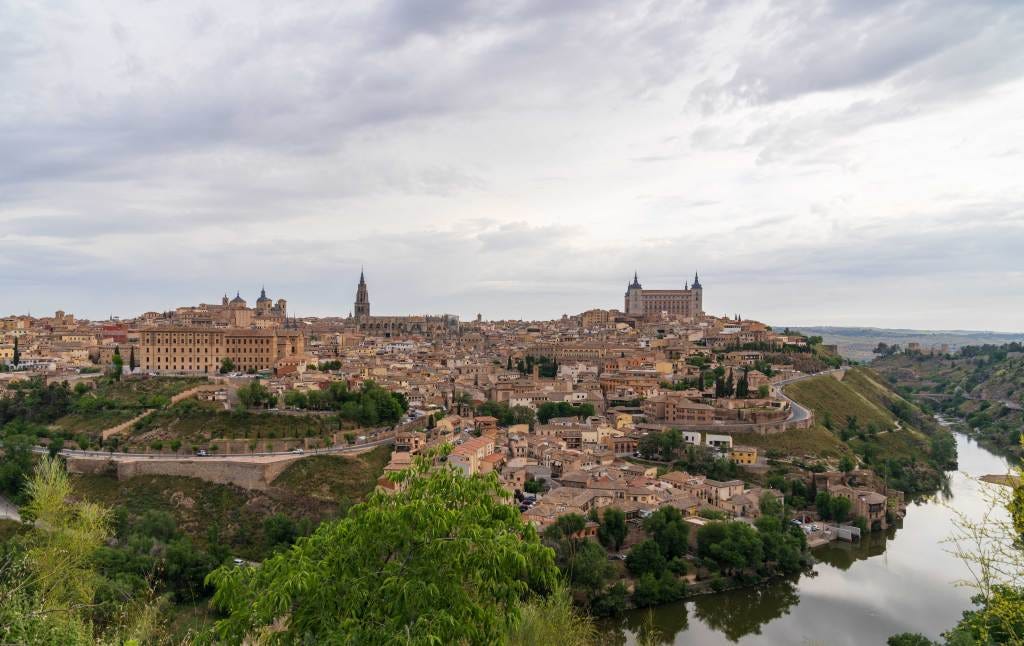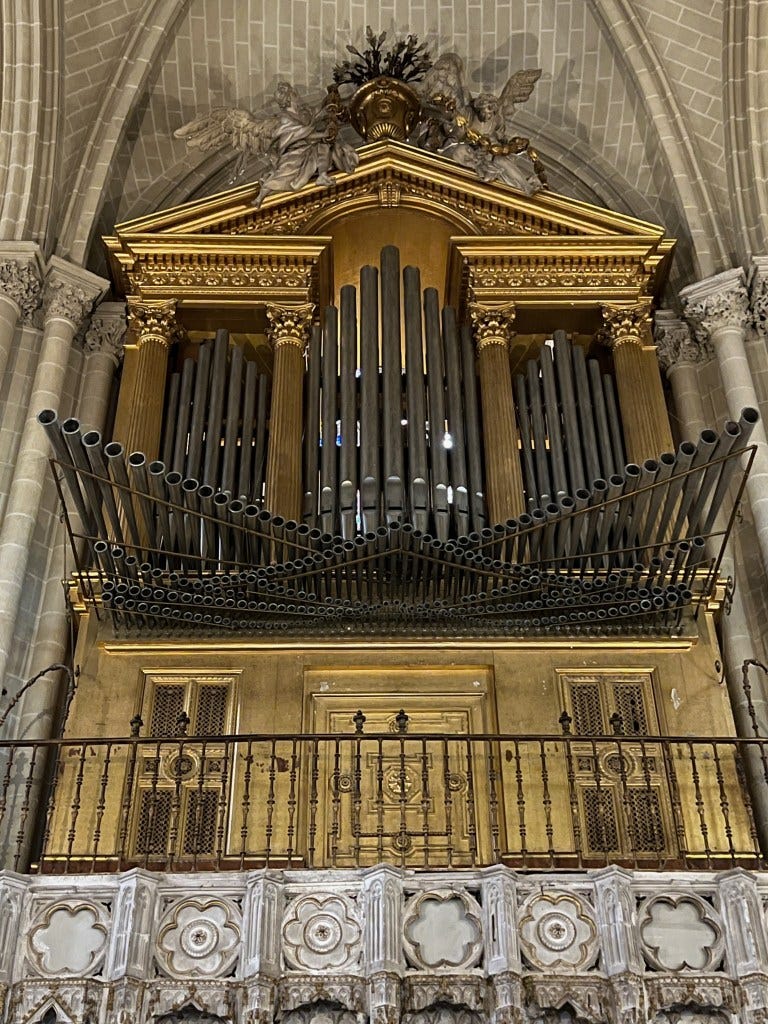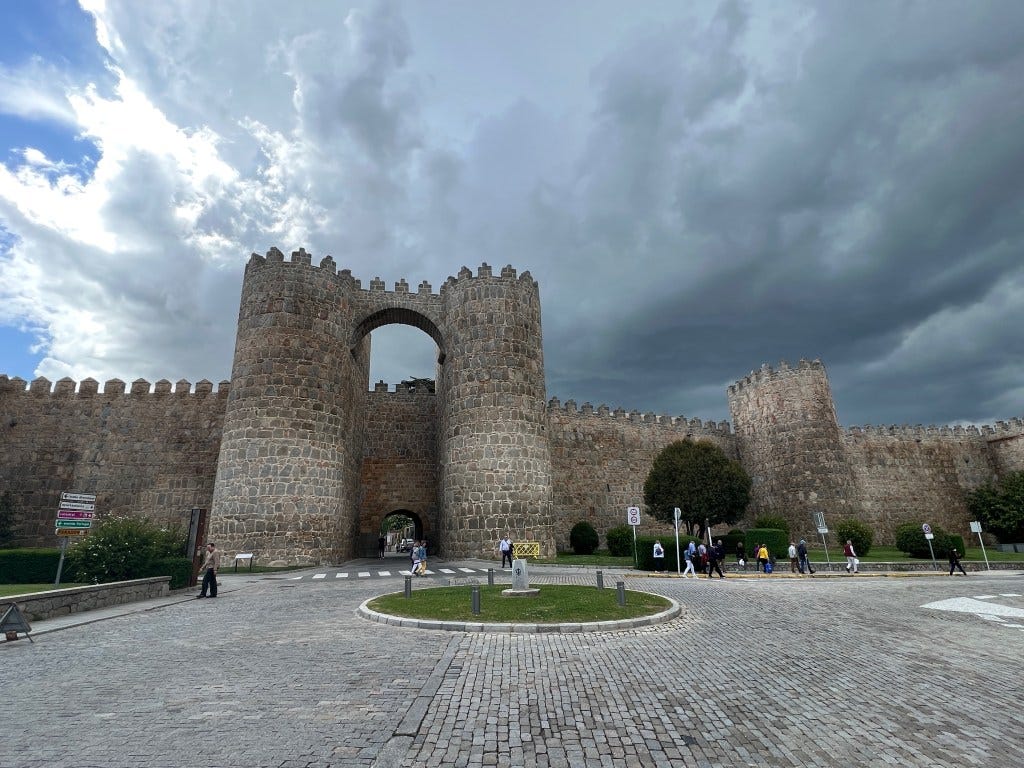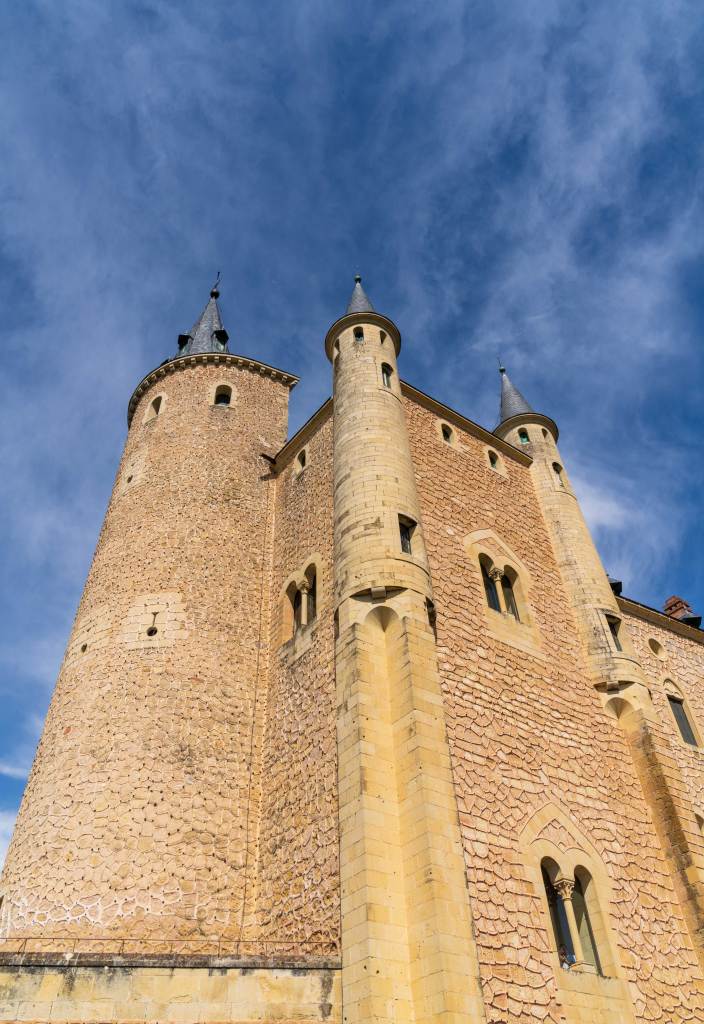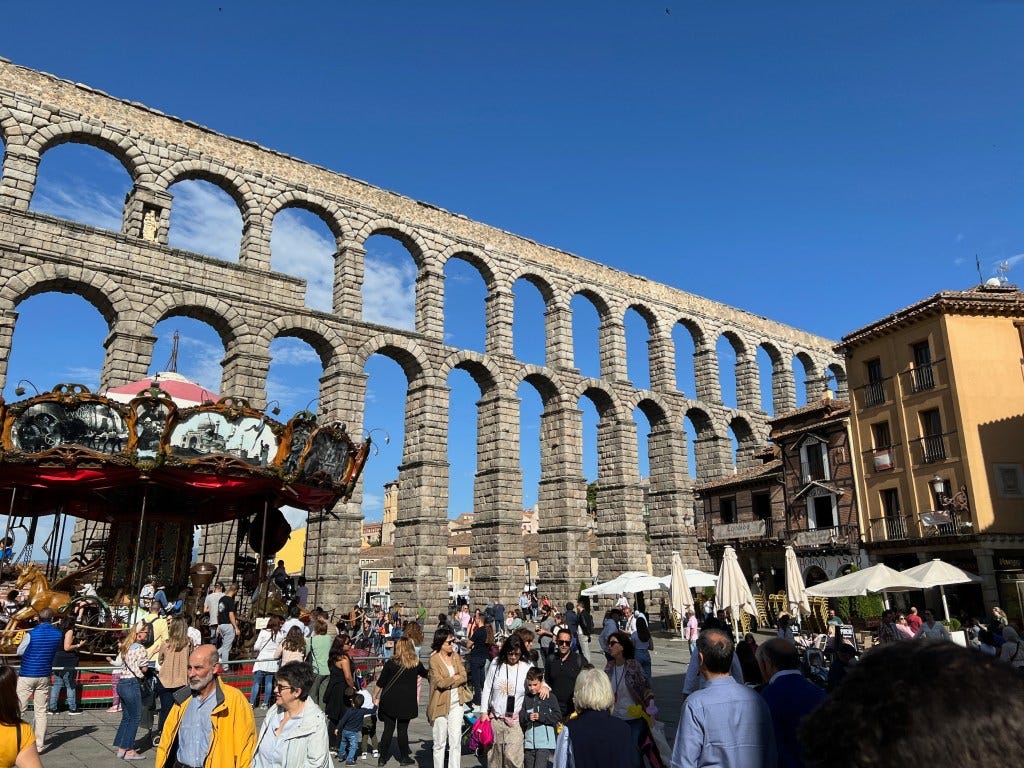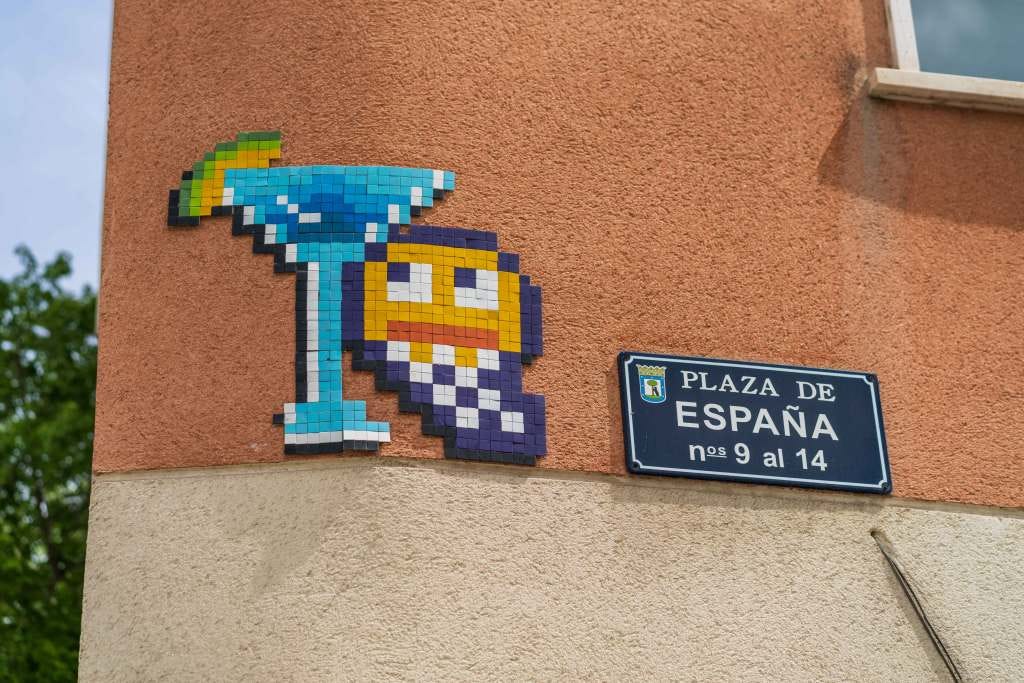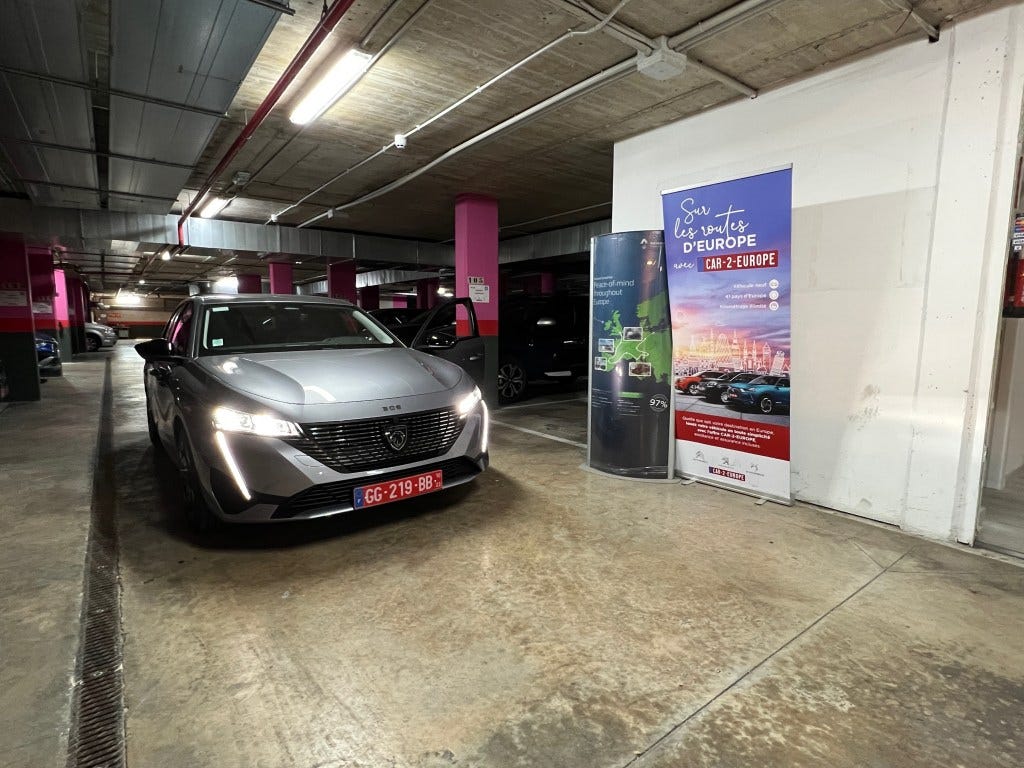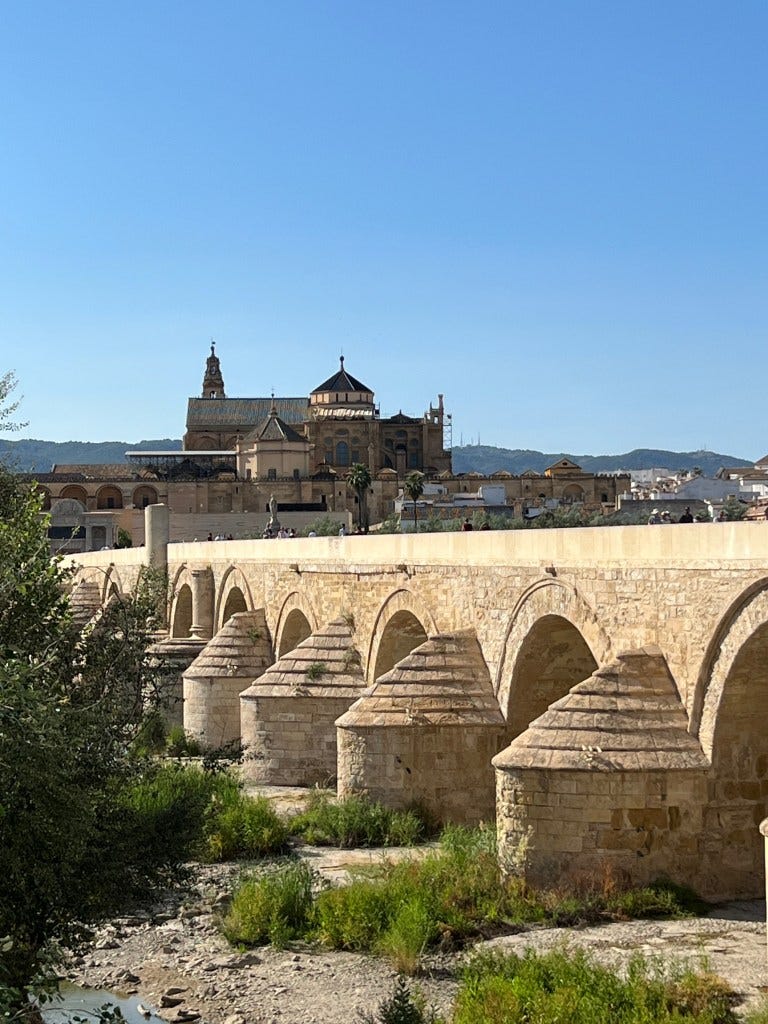Madrid and beyond
The Museums
We began our museum day with a plan borrowed from Visit-A-City’s recommended Madrid itinerary. The first stop was the Thyssen-Bornemisza Museum for a suggested one-hour tour before moving to the famous Prado Museum. As luck would have it, the first tickets we could get to enter the Prado were at 11:30, and the Thyssen opened at 10 AM, leaving us just over an hour to play with; perfect. The Thyssen-Bornemisza museum is incredible and requires way more than one hour. We were only on the second exhibit floor when we realized we had 15 minutes to get to the Prado. The Thyssen Museum has exciting pieces and a variety of genres, eras, and styles to make a magnificent museum. It deserves more time to explore if you love art.
Thankfully, it was a quick walk to the Prado, and we soon entered one of Europe's most legendary museums. I was impressed by the Prado’s sheer size, the number of exhibits, and the historical significance of many of the pieces, but it wasn’t my thing, and that bummed me out. Most of the museum is early 14th and 15th-century work that is primarily religious-based and repetitive. It may sound a touch egotistical, but we’ve traveled quite a bit, and after a while, the cathedrals and museums in Europe start to blend. When you’ve seen the Sistine Chapel, many other frescos and murals begin to look alike and lose a little zeal.
We spent almost four hours going through all the floors of the Prado, and we saw just about every exhibit. Any time you get to see historical works by Caravaggio and culturally significant works like Goya’s depictions of Spanish history, it is a privilege. But the great thing about art is personal interpretation and feeling, and while I am stunned by the ability of these artists, much of the work didn’t grab me. In hindsight, I would’ve preferred staying in the Thyssen Museum for three hours and cruising through the Prado in one or two.
The Day Trip
I was bombarded with suggestions and “must-see” destinations when planning this trip. Two of which were the cities of Toledo and Segovia. Each is about an hour’s drive from Madrid but in opposite directions. They each hold serious historical clout in the legacy of Spain. We discussed leaving Madrid early and trying to stay in one of the cities, but we couldn’t get a good itinerary nailed down. So, we opted to use a day of our Madrid stay to go on an organized day trip to visit both cities.
We started with a too-early-for-vacation wake-up to ensure we could achieve the day’s first goal, churros for breakfast. We walked into the Churreria-Chocolateria Las Farolas just after they unlocked the doors at 7 AM to get Churros and Porras with chocolate and coffee. I didn’t think these were as good as the ones we had at Chocolat on our food tour, but they were pretty tasty. There are many opinions about who serves the best Churros and Porras in Madrid, but we chose this one based on some YouTube videos by a pair of Madrilenos and travel experts. Chocolat still reigns supreme, in my opinion.
After scarfing down the goods and some coffee, we walked to the tour meeting point near the Royal Palace at the Monument to Phillip IV. Shortly after, we were in a minivan heading south toward Toledo. The views of Toledo from the surrounding roads were spectacular, affording some of the day’s best photos. Toledo is a fascinating city due to its history of culture clash and coexistence. Over the centuries, Visigoths, Romans, Muslims, Jews, and Christians claimed this territory. There were some overlaps with periods of peaceful coexistence, and some not so much. The cathedral is impressive for its sheer size alone, but there is also fantastic artwork, gold sculptures, and the most outstanding pipe organ I can remember seeing. After walking around the town and cathedral for a couple of hours, it was back in the van to drive to Avila.
Avila is one of Europe's few remaining walled cities and a UNESCO heritage site. We had lunch here and made a brief walking tour inside the walls, but otherwise, it was a quick stop just to get a taste of the city. Next up was Segovia.
After another hour or so of being jostled around the back of the van, we arrived in Segovia. The city has two impressive structures that you can see from afar: the main Cathedral and the famous Alcazar (it inspired Walt Disney for Snow White). The Alcazar is spectacular, and we didn’t have enough time to explore it to the fullest or get a good vantage point from afar to get the classic photo of the entire thing. Oh yeah, there’s also a 2,000-year-old Roman aqueduct running through town that still delivered water until about 100 years ago. I would go back to Segovia for a weekend as it looks like an enjoyable place to hang out and explore.
The Market
Our last day in Madrid began with one of the most famous and possibly the most diverse flea markets I’ve ever seen. We left the hotel and walked to the El Rastro district to explore the legendary weekly street market. There was the expected amount of cheap knock-off Chinese crap, but there were also a good number of vendors selling very nice, quality locally made goods. Then there were the vintage clothing booths. It is rumored over 100,000 people come to this thing each week, and after seeing the crowds, I believe it.
I wanted to explore the vintage booths as I saw a ton of sweet sports coats, jeans, leather jackets, and even some old-school Humphrey Bogart-style trench coats. But I had already given Crystal the “we don’t have room” spiel, so I couldn’t indulge. I would’ve had to buy another suitcase to ship home if I started walking through these booths; there were some seriously nice clothes to be had. On a different trip to Madrid, I will bring a bag whose sole purpose is to bring vintage clothes home from this market.
Post-market, we walked to the Plaza de Espana and Temple de Debod to see some of the last “must-see” items. The park was beautiful and full of people lounging on the lovely grass. Madrid is a city with picnic options aplenty.
It was then time to find a place to eat, but being the fiesta of San Isidro everywhere was packed. We walked from the Royal Palace to the Barrio de las Letras neighborhood of our food tour, looking for a place that had seating available and wasn’t a ripoff. We eventually walked into a little restaurant/pub called Taberna el Sur de Huertas. The food was great (risotto and curry chicken with patatas bravas), and we had a fun conversation with a drunk local couple. Good times. Stuffed and tired, we returned to the hotel to prepare for our departure. I was looking forward to the next day because it would be the actual start of our adventure. The day we picked up our “new” car and drove out of Madrid to explore.
Breakfast was a quick bite at a cafe near the hotel, which was good because that’s when we discovered a marathon going on outside, and the streets around our hotel were closed. This would cause problems with our cab pick-up plan, but nothing we couldn’t solve. We also grabbed some cash from an ATM, which proved to be fortuitous later in the day.
Picking up the car was amazingly simple. The clerk from Car-2-Europe was ready and waiting for us. We did a quick once over of the vehicle and its features, signed a few papers, and it was effectively ours—a 2022 Peugeot 308 hatchback that had traveled all of 4 kilometers. We even have the title/registration paperwork for it. The nav system works very well, and we used it to guide us to Cordoba because Waze didn’t seem to recognize the street address for our Airbnb. The 308 hatchback is easy to drive, comfortable, and has impressive fuel economy (it is a diesel). We traveled a little over 380 km and used less than ¼ of the tank. It is not a powerhouse but modern, and I’d rather have an underpowered manual than a slightly quicker automatic.
The drive took about four hours and was uneventful after a wrong turn very early. Of course, the tolls were not so uneventful as they refused all of my credit cards. This could be a problem in the future, but for today, each toll plaza had a booth with a person, so we could pay cash. I hope this doesn’t become an issue in every country because we will drive through many tolls, and not all of them will have someone there to take cash. Fingers crossed, this situation gets resolved.
Pedro, our Airbnb host, met us at the garage and walked us to the apartment. He couldn’t have been nicer and told us a couple of good places to eat. We got settled, grabbed a bite to eat, and began a stroll through the old city of Cordoba. We eventually made it to the river and the 1st-century Roman bridge. The bridge is an incredible sight, even though it has been added on to, remodeled, and probably flat-out rebuilt over the years, it’s no less impressive.
We will explore Cordoba for a couple of days and make a day trip to Seville before moving on to Granada. It will be a fun few days with more history-packed sights than you would think possible.



